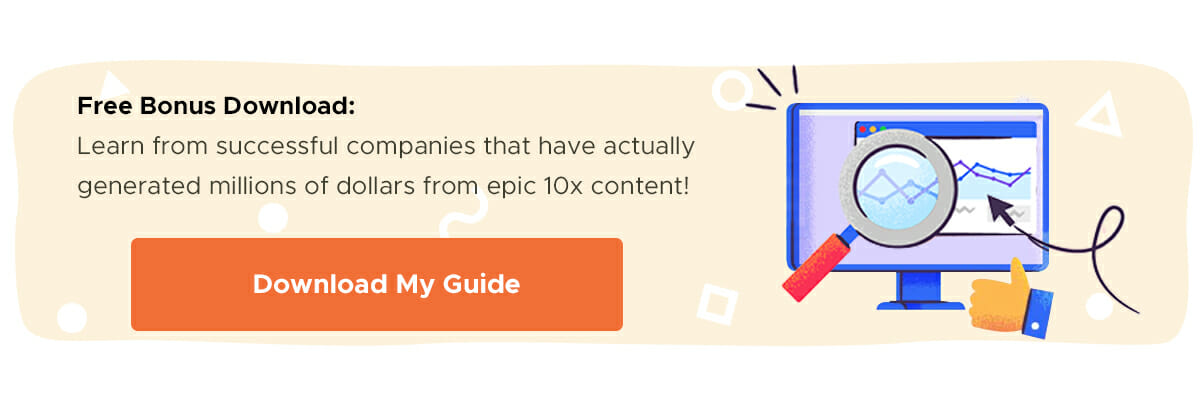Stories are much more than yet another form of entertainment. From ancient cave drawings to fairytales, novels, videos and podcasts, storytelling has always been the most powerful communication tool.
Stories engage us, intrigue us, and help us process loads of information effortlessly. When it comes to marketing, through narratives and immersion a storyteller can build stronger relationships with their target audience and trigger a desired emotional response.
Believe it or not, there is a scientific explanation that we are biologically wired for stories: When we hear an engaging story, oxytocin (a molecule related to pleasant social interactions) is released, which causes a feeling of empathy in us.
So it’s not that surprising that storytelling has become a fundamental part of any solid user experience strategy. Here is how to get the most out of it.
Identify the Key Elements of Your UX Story
When reading any kind of literary work, be it a fairytale or a sci-fi novel, there are a few core elements we come across:
Understand the Hero of the Story
The main character of your UX storytelling strategy is your target customer, not you. Therefore, before you start working on your website content or design, you first need to know who they are. Who would like to see your website and hear your story? What audience segments would benefit from your content and interact with it?
Build Buyer Personas
To answer these questions, you need to research your target market thoroughly and develop solid buyer personas.
Simply put, a buyer persona represents an in-depth description of your typical customer. This is not something based on guesswork. On the contrary, creating buyer personas is a result of detailed research and analysis of your target market.
Before you put a pen to paper, you need to learn about your target customers’ demographics. What’s their age, location, nationality, education and marital status? Learn more about their background, the everyday challenges they face, the goals they want to achieve, and the problems that keep them up at night.
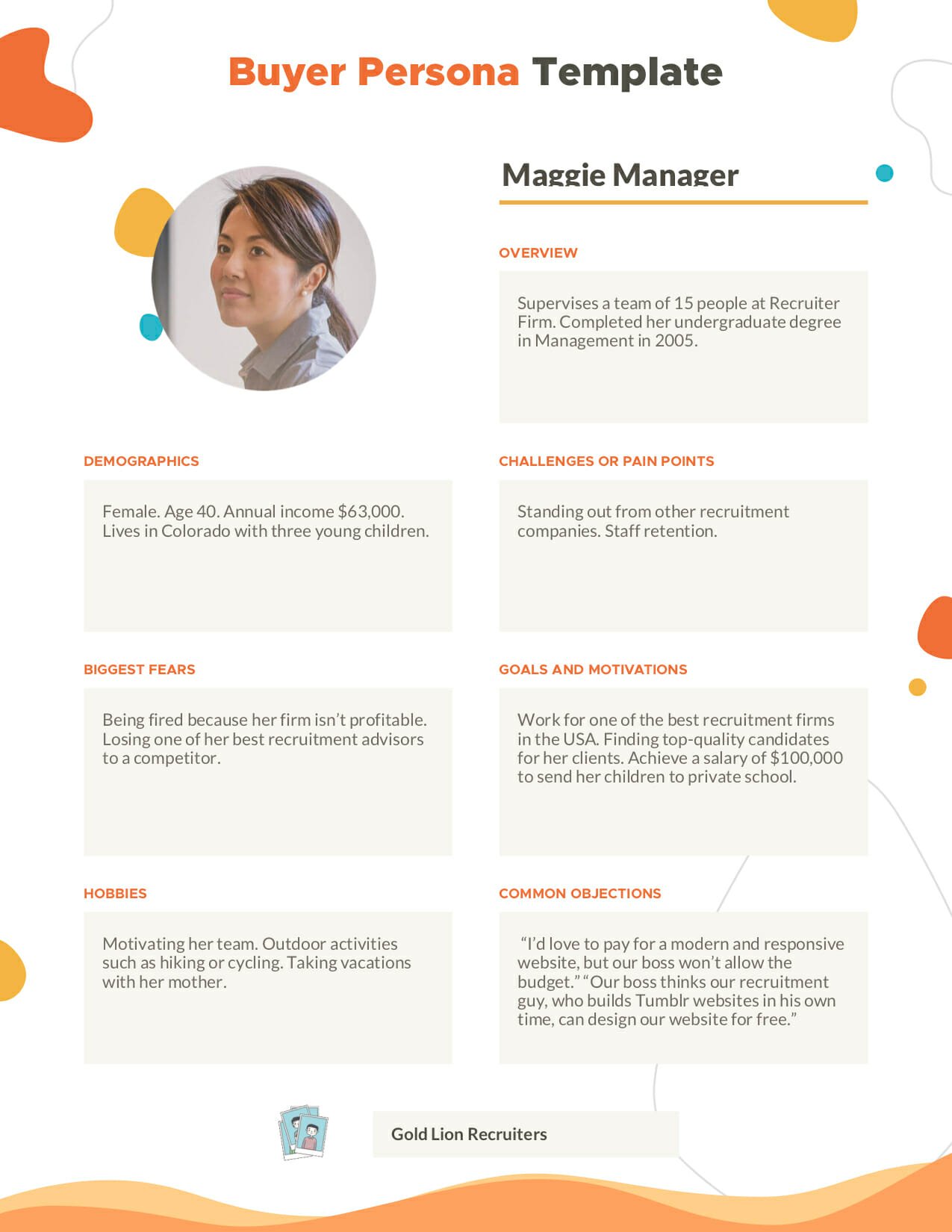
Most importantly, you need to learn how they feel and think so you can create stories that resonate with them. Are there any common objectives, hobbies and interests that link them together? What drives their motivation and loyalty to brands? What kind of content, deals and services would work for them?
These are the kinds of questions you should be asking:
- What is the buyer’s role in the company?
- What type of company does the buyer work for?
- What level of education has the buyer achieved?
- What does the buyer like to do for fun?
- What is the buyer’s gender?
- What is the buyer’s age?
- What is the buyer’s household income?
- Who lives with the buyer at home?
- Does the buyer live in an urban, suburban or rural environment?
- How does the buyer spend his/her day?
- What does the buyer read for fun?
- How tech savvy is the buyer?
- Which social networks does the buyer prefer?
- What are the buyer’s biggest challenges at work?
- How does the buyer define success in the workplace?
- What are the buyer’s career goals?
- What are the buyer’s biggest fears?
- What are the buyer’s most common objections?
- How can you help solve the buyer’s challenges?
- How does the buyer prefer to communicate?
Say you’re an SEO company specialized in the fitness industry. Your target audiences are nutritionists, personal trainers, fitness apparel creators, fitness equipment stores, gym owners – basically, anyone in the fitness industry who has a website. Your goal is to collect relevant information about them, from their exact job title, age and location to their needs and state of their website so you can tailor your storytelling to them.
Dive Deeper: Attract the Right Prospects With Buyer Personas (Includes Step-by-Step Templates!)
Collect Customer Data
There are numerous ways to collect customer data. For example, start by listening to them on social networks and joining relevant online communities:
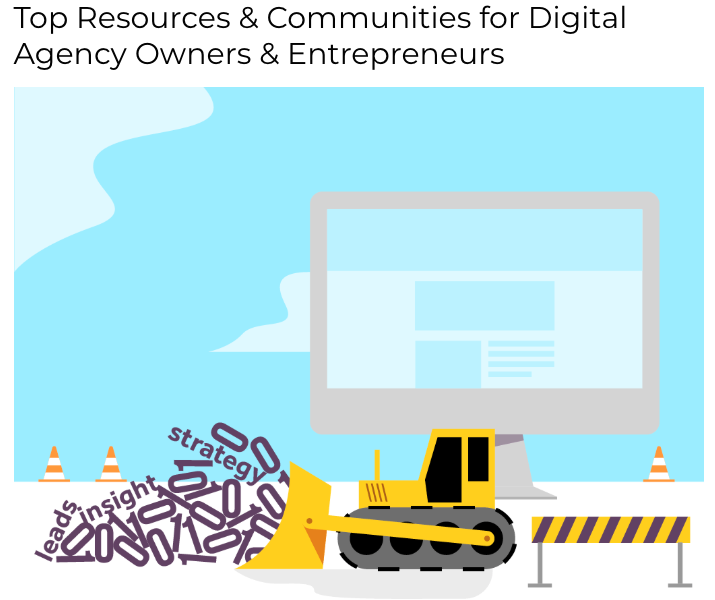
Your goal is to track their discussions, monitor their language and learn more about their preferences so you can inject this information into your storytelling strategy.
Anonymous online surveys, questionnaires, interactive quizzes, chatbots, focus groups and social media polls are also an amazing way to collect reliable customer feedback and give your buyer personas a boost.
Dive Deeper: Top 10 User & Customer Feedback Tools to Improve Conversion
Keep Things Fun with Story Conflict
The conflict is what makes your story exciting by adding a sense of tension. Without it, your story would be dull and pointless (imagine your favorite movie in which the protagonist gets what she wants in the first ten minutes).
Cathy Yardley, author of 20 books, uses the GMCD formula to ensure that each scene and chapter has sufficient conflict:
- Goal – What does your character want to achieve or attain?
- Motivation – Why does your character want to achieve that goal (why is it important)?
- Conflict – What is standing in the way of this character achieving their goal?
- Disaster (or Resolution) – What is the result of the scene’s conflict? Yardley outlines three possible options:
- The character doesn’t get what they want
- The character doesn’t get what they want and something worse happens
- The character does get what they want, but something else goes awry as a result, leading to a new conflict
In marketing, this conflict needs to illustrate the real-life problems your target audiences face and be based on real customer data. In other words, you need to identify the conflict of your story early on and make it easily understandable by anyone visiting your website.
For example, our fitness owner realizes that not optimizing their website for search engines impacts their bottom line on multiple levels and decides to hire your agency to help them solve this problem.
Create a Solid Setup to Support Your Story
How often have you disappeared into the book you were reading? This happens when you start sharing the hero’s feelings and fears and thinking the way they think. You can feel the breeze and smell the sea.
The setup of a story provides the temporal and spatial context, making it easier for us to understand the content we’re reading. During your content creation and website design process, you need to know when and where your customers need your products and services.
As I’ve mentioned, customers’ choices directly impact how the story will end. In this story, you’re their sidekick – someone who supports their ideas, detects the potential problems in their strategy, and helps them achieve their goals. If a customer is Sherlock Holmes, you’re their Doctor Watson.
So, based on the data you’ve collected, you need to map out their entire journey in order to provide them with smooth and personalized user experiences:
- A customer’s end destination. What are the major challenges they face along the way or what tasks are they expected to complete? Should they download your PDF file, sign up for your email list or maybe make a purchase?
- How can you help a user get to their desired location? Your design and content should provide assistance to your customers. Through informative articles, videos, search functionalities, links, menu categories and CTA buttons and links, your goal is to guide them down the right path towards completing the desired action.
- You will be able to build logical information architecture. Simply put, this is the way you manage and present your content on your website. For example, will you break your content up into lots of website categories? Maybe you would rather create a one-pager with a simple hamburger menu and CTAs that help users jump from one section to another.
- Understanding story outcomes also impacts your content creation efforts. You need to experiment with types of content and tailor them to different stages of your customer journey. For example, in the awareness stage, when a user is learning about your brand, free infographics, videos and checklists may work best. On the other hand, free demos, product trials and free consultations may work wonders during the decision stage.
Let’s get back to our example of an SEO agency and its fitness clients. First, you need to keep a potential client on your website by providing clear and simple navigation. Large CTA buttons, clickable links and mobile-ready and fast-loading pages will reflect your authority and build trust with a client.
Then, the client will start their research. They will probably visit your blog for more information. Well-written and visually appealing content will prove that you’re an authoritative source of information and motivate them to connect with you.
Next, they will want to visit your “about” page, FAQ page or want to learn more about your pricing and client roster. Apart from the transparent information about your services, this is a great place to display clients’ reviews, case studies, and testimonials that will gain their trust and inspire them to convert.
Dive Deeper:
Provide a Resolution to a Problem at the End of the Story
Every good story includes the resolution of the conflict, positive or negative. The resolution of your UX story should provide a wider context around your main “characters” (target customers) and the problems they faced, emphasizing how exactly your product or service helped them.
For example, in the case of the fitness website owner, this could be offering free quotes, consultations or exclusive content. If a visitor is satisfied with what they see, they will want to contact you. Make sure that your live chat, contact forms, and contact information are easily clickable and prominent.
Diversify Your Content Creation Strategy
Over time, the concept of storytelling has changed a lot. It all started in ancient times, when someone killed a boar and wanted everyone else to know about it. Eventually, the printing press was developed, transforming oral storytelling into the written word – books, newspapers and similar printed materials which reached wider audiences:

More recently, the radio, cinema and television arrived, opening the door to the advertising that we are now familiar with. However, TV ads resulted in new issues, such as the rising costs of promoting your brand. Only the largest companies with big budgets could reap the benefits of TV advertising, which have slowly been killing smaller businesses.
This is why the transition to online advertising has been important, allowing anyone on the World Wide Web to spread their thoughts and ideas freely. The only problem with it is that the volume of online content is constantly growing. Therefore, to get yourself noticed by the right audiences and, above all, remain relevant, you need to diversify your content marketing strategy.
Traditional articles published on your blog are the safest option to tell your story and engage your audiences, but they’re far from being the only option. Here are a few powerful ways to integrate storytelling into your content strategy.
Use Customer Testimonials and Success Stories
Storytelling is not about telling your customers how great you are. You need to let them come to that conclusion themselves and one of the most effective ways to do so is to let your customers say how they have benefitted from your product or service.
The Internet is packed to the brim with spammy branded ads, so more and more, customers are turning to unbiased peer reviews. The majority of online customers – 90% – trust online reviews as much as they trust their friends and families’ recommendations.
There are numerous examples of brands using customer testimonials effectively, and one of them is definitely Airbnb. They’ve created “Stories from the Airbnb Community” where they let their customers tell their story:

And Salesforce has an entire section dedicated to their customers’ success stories, where they talk about their own clients’ accomplishments and how they helped them achieve these goals:

Dive Deeper:
Integrate Data-Driven Content with Engaging Visuals
Helpful, insightful and data-oriented content screams: “These guys know what they’re talking about!”
For example, when working with a certain client for a while, you could create a comprehensive case study that includes all the above mentioned storytelling stages, from introducing the hero of the story (a client), the problem they faced (conflict), and how you helped them solve the problem and grow their business (resolution). When broken up into smaller sections and boosted with quality visuals, case studies will improve people’s perceptions of your brand significantly.
Original research studies related to your industry are also a great way to boost your content marketing efforts, as they provide lots of value to your readers. You just need to find a way to present them properly. Google has taken the data-driven content to a whole new level: They created the Lookback campaign that consists of the most inspirational events, facts and questions from previous years:
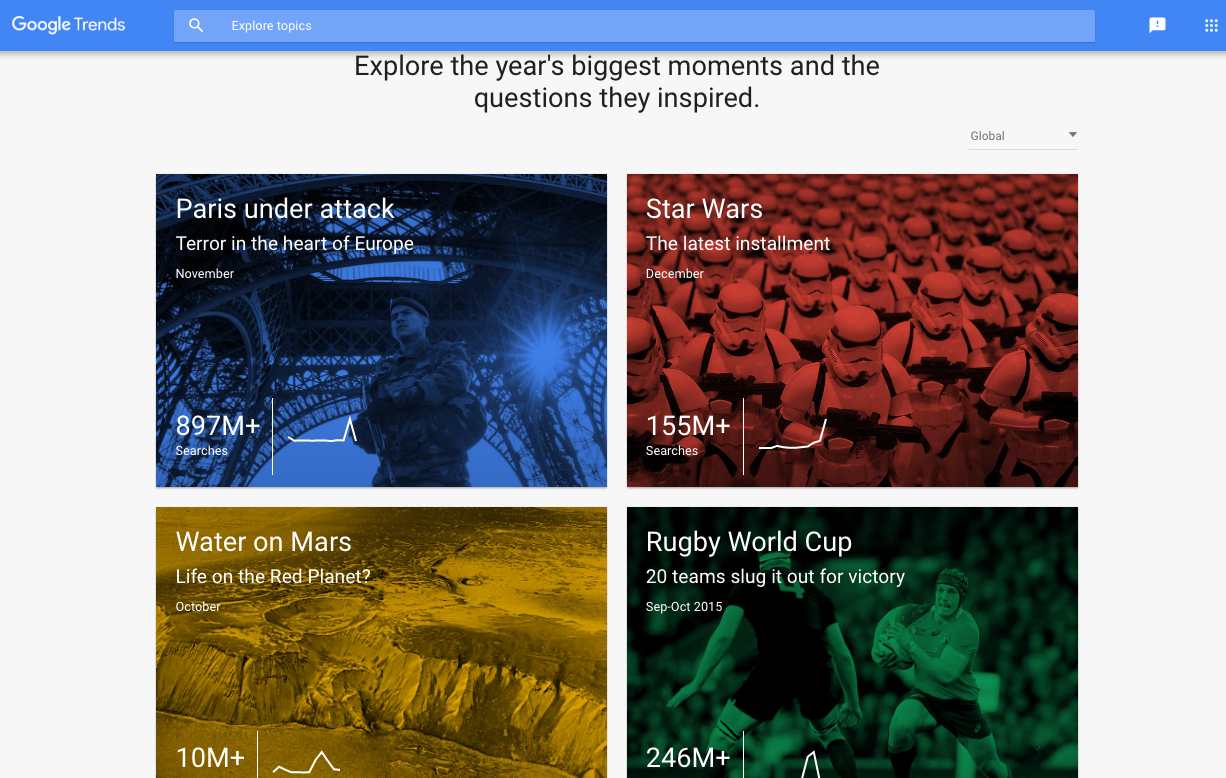
In addition to text-based articles, videos, infographics, animations and even GIFs can serve as a method of presenting data effectively. To make the campaign even more interesting, Google created a gorgeous video to build an engaging story about it:
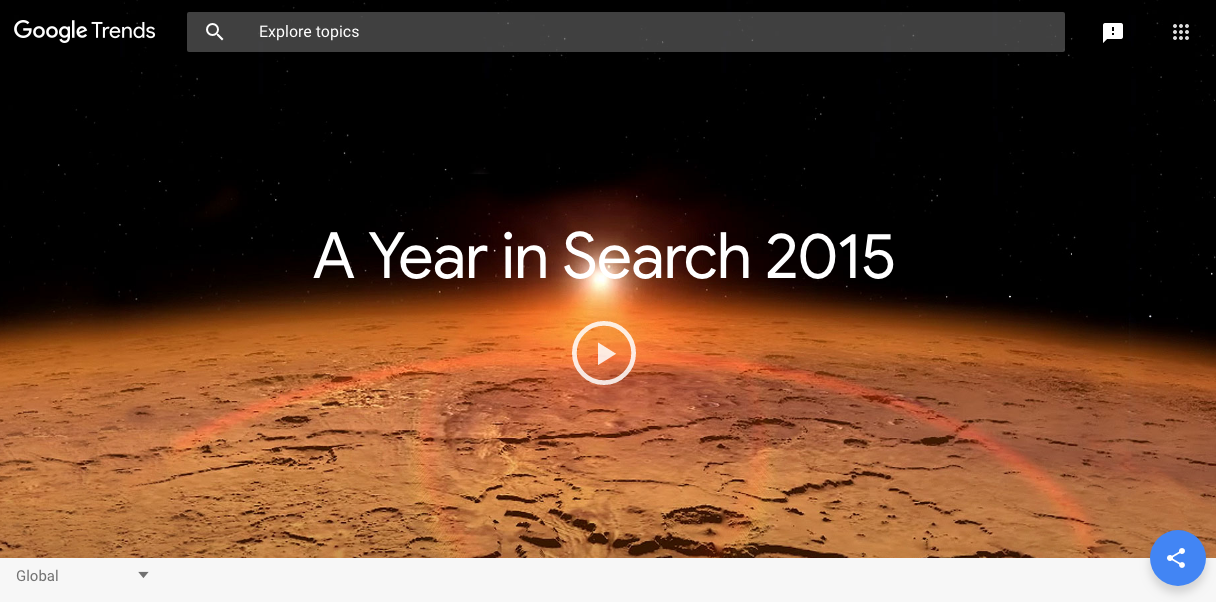
Reality-Augmented Storytelling
The virtual reality and augmented reality technologies are still in their infancy, but they’re evolving at an astounding rate. They’ve impacted different aspects of marketing, and content marketing is no exception.
We’ve already seen AR-backed games like Pokémon Go. Through reality-augmented content, brands can easily engage their audiences through sensory experiences and let them actively participate in the storytelling process.
One such example is IBM’s recently created VR app, inspired by the movie Hidden Figures. It acts as a virtual reality museum where users can meet “overlooked heroes from technology’s early days” through interactive and immersive user experiences:

Choose Visual Elements that Reflect Your Brand Personality
What kind of product or packaging attracts customers? Ones with vivid colors and attractive designs, right? The same goes for your website or app. Humans are visual beings and, as such, we process images much faster than text.
Precisely because of that, you should never underestimate the power of the holy trinity in the UX world: color, typography and layout.
Select Color Palettes that Reflect Your Brand
According to the physiology of colors, every color evokes particular emotions in us. For example:
- Blue is associated with stability, serenity and trustworthiness
- Yellow stands for feelings of friendliness and openness
- Green is linked to nature, purity and growth
- Red is a color of love, passion and anger
- Purple reflects wisdom, luxury and spirituality
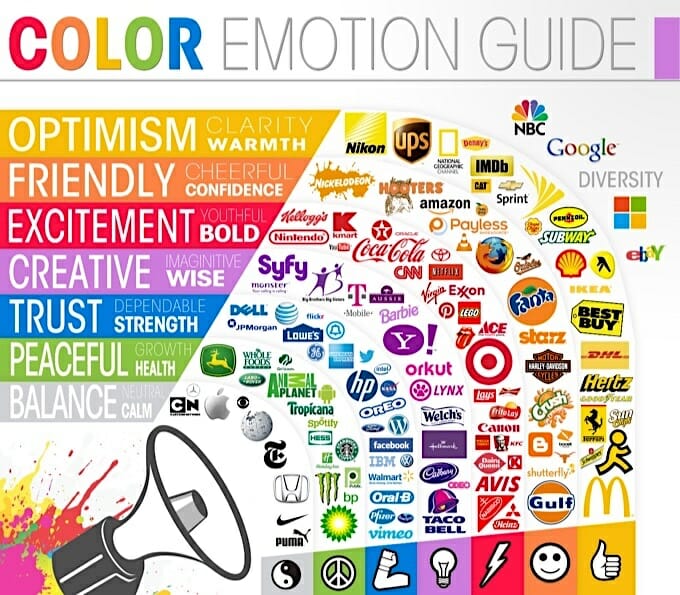
Given these facts, it’s not surprising that 85% of customers make their purchasing decisions based on the color of the product packaging.
Think about what you want to convey with your color palette. Whether you choose matching colors or decide to play with multiple hues of the same color, always make sure that they reflect your brand personality.
One such example is Juice Beauty, an organic skincare brand. They use only the soft nuances of green and white across both their website, social networks and product packaging. The reason for that is simple – they want to emphasize their major competitive advantage in the market: organic and healthy product ingredients.
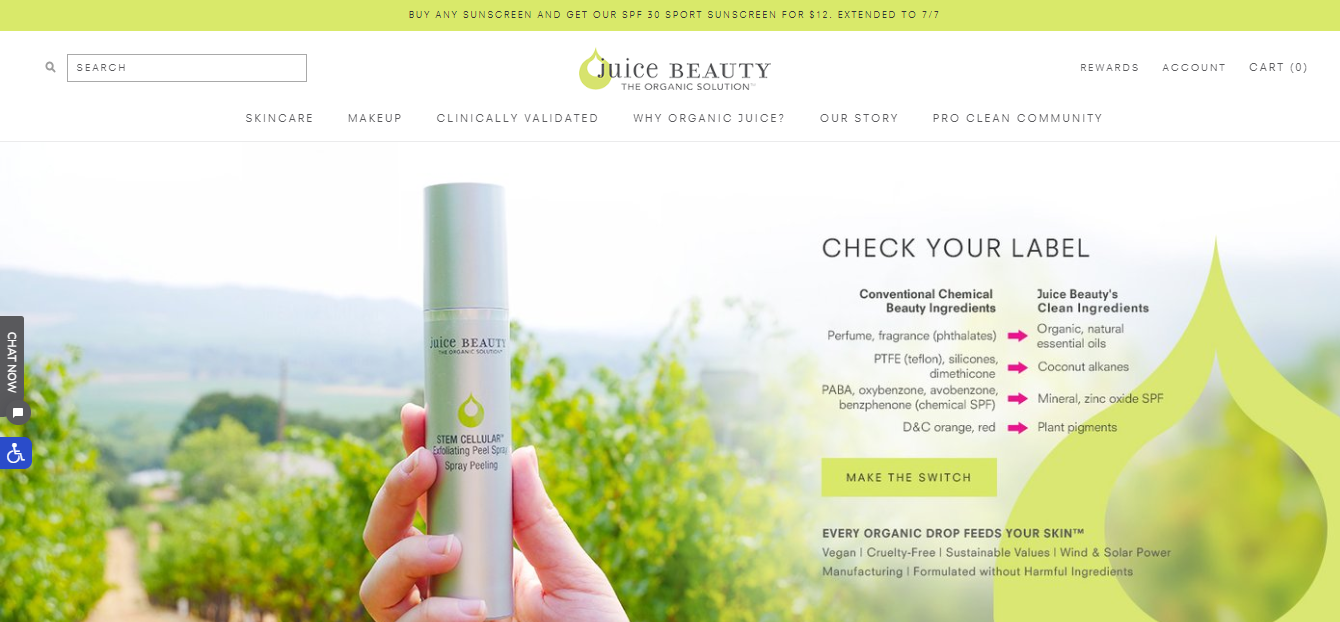
Dive Deeper:
Use Your Logo Consistently
A logo is your brand’s ID. It’s the first thing people will see and memorize when interacting with your brand. Think about your favorite brands: when searching for coffee, you keep an eye out for the round green-and-white Starbucks logo. When you want a fast-food burger, you look for those golden arches. When waiting for your rideshare, you peer at car windshields for that pink logo.
That is why you need to design your logo wisely. Pick the colors, fonts and images that reflect your brand mission, goals and values. To increase user experiences, you need to use your logo consistently across all online (and offline) channels that your audience uses. If you pay attention to any famous brand, from Airbnb to Nike, you will see that their logo appears consistently across all marketing channels they use, from their social networks to websites to business cards.
Another great example of using a logo consistently is definitely the Content Marketing Institute’s website, famous for its top-quality content:
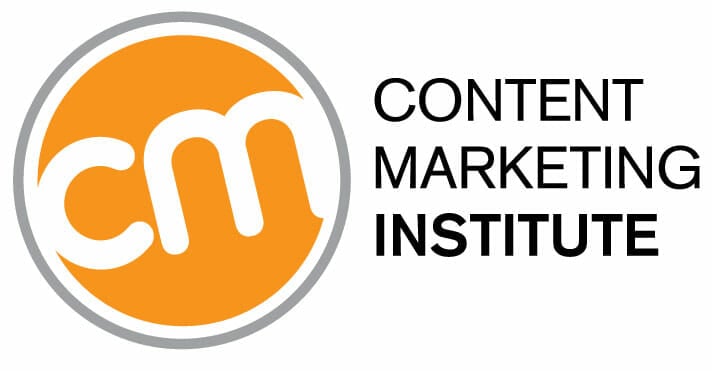
To increase brand awareness and build trust with their audiences, they always place their logo on the content they create, as shown (at the bottom of) this 2017 infographic:
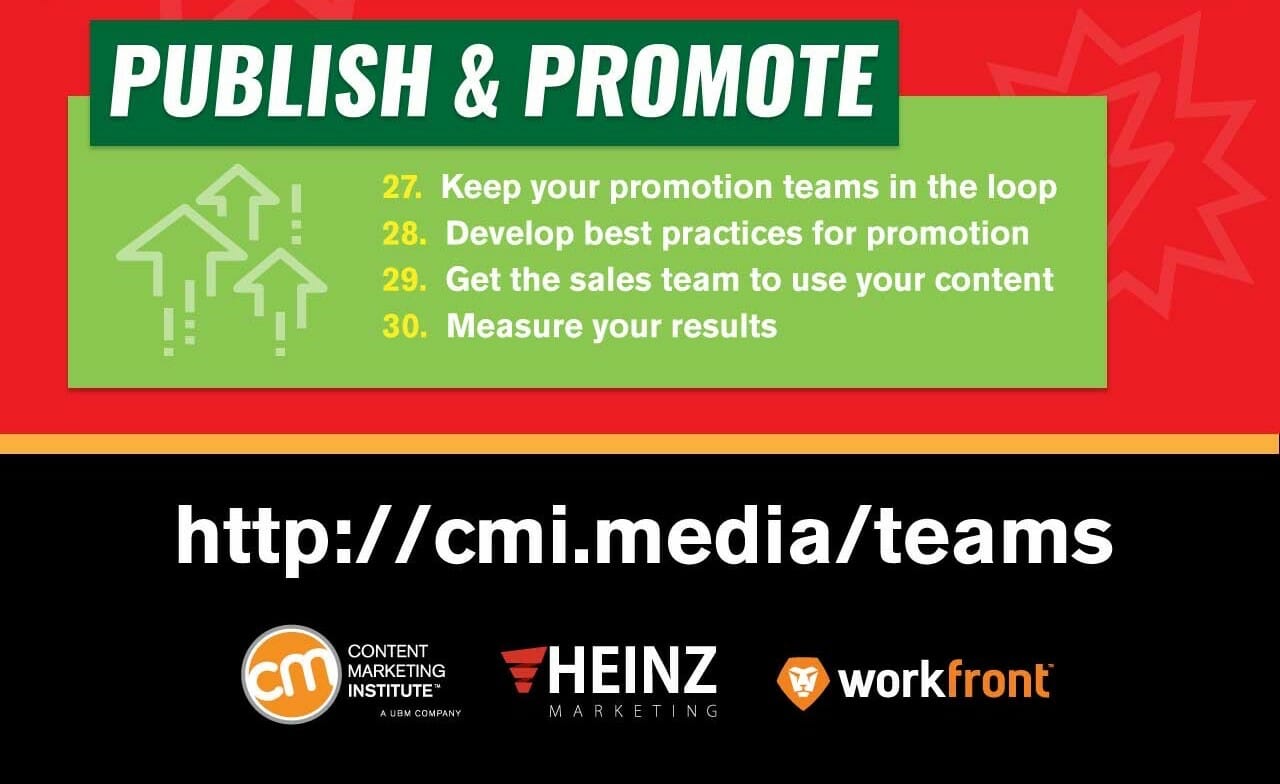
Pay Attention to the Use of Fonts
When it comes to choosing typography for your website, there are no hard and fast rules on which fonts to follow – except make sure it’s legible and appropriate (i.e. not Comic Sans for a legal firm) – but you will need to choose one that works in harmony with your overall website design and illustrates your brand personality.
Typography determines how you will present your brand to the world, which we can learn from these famous brands:
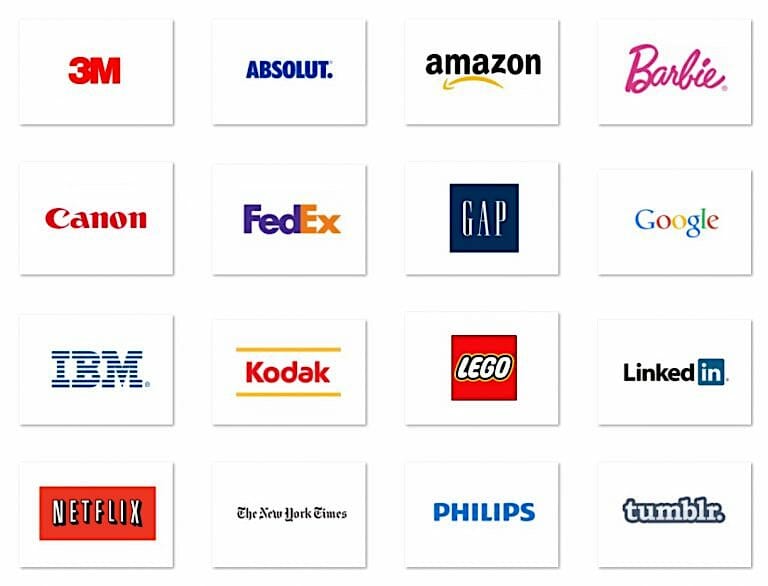
Over to You
To succeed in today’s overcrowded digital landscape, you need to deliver authentic and compelling experiences to your users. And this is where UX and storytelling collide. By understanding how your customers – the heroes of your story – interact with brands and what they expect from them, you will get a clearer sense of how to design your website properly.
Most importantly, looking at the customer experience as a story arc helps you deliver meaningful and holistic customer journeys that result in greater conversions and retention rates.
